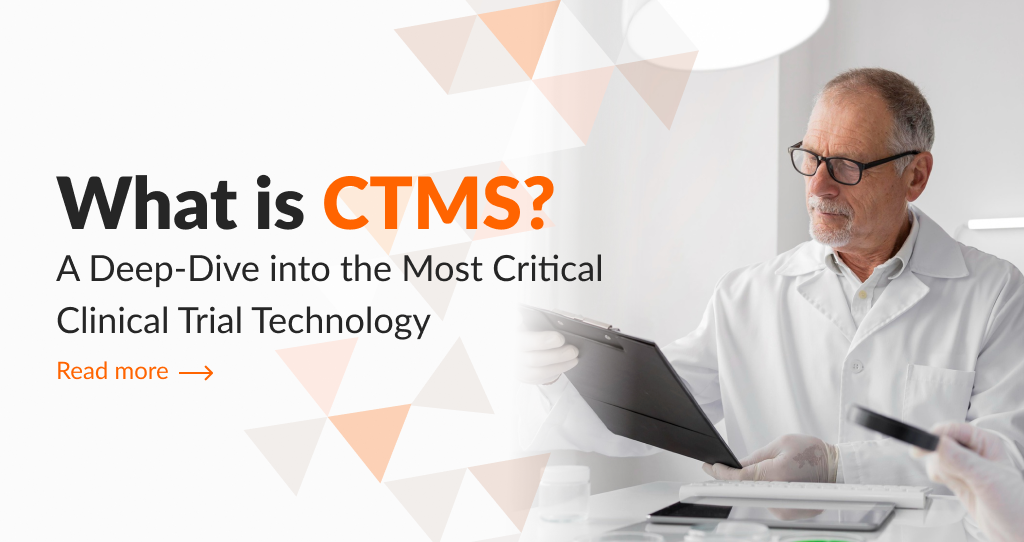In today's complicated, highly regulated environment of clinical trials, juggling innumerable documents, protocols, timelines, and stakeholders is no small feat. That is where a Clinical Trial Management System (CTMS) proves to be an invaluable asset. A CTMS is an application that optimizes planning, tracking, and trial management of clinical trials, promoting efficiency, compliance, and transparency throughout the study life cycle.
With increasing scope and sophistication in the clinical research industry, the role of CTMS can hardly be overstated. Let's break down why implementing a CTMS is not merely an upgrade that is technological but is also an imperative that is strategic to sponsors, Contract Research Organizations (CROs), and research institutions as well.
1. Centralized Trial Management
One of the strongest advantages of a CTMS is centralization of data and functions. Clinical trials deal with multiple sites, investigators, regulatory agencies, and vendors. A CTMS offers one platform where everyone is able to get real-time data about trial metrics, milestones, and deliverables.
It removes the need for disparate spreadsheets, mail threads, and disparate systems, which tend to result in miscommunication and latency. With CTMS, everyone is working off of the same page, which improves collaboration and accountability amongst teams and locations.
2. Enhancing Regulatory Compliance
Regulatory adherence to GCP (Good Clinical Practice), ICH standards, and FDA regulation is indispensable in clinical trials. CTMS ensures that organizations remain compliant by streamlining procedures, automating paperwork, and creating audit trails.
Automated reminders for pending tasks, protocol breaches, and visit report tracking guarantee nothing slips through the cracks. During an audit or inspection, it's straightforward to generate accurate records and prove compliance with mandated protocols using a CTMS.
3. Improved Study Monitoring and Oversight
A CTMS gives study managers an elevated bird’s-eye perspective of trial performance. Dashboards and reports provide real-time insight into important KPIs like site activation, subject enrollment, adverse events, and schedules for monitoring visits.
At this level of visibility, decision-makers can pinpoint and resolve bottlenecks ahead of time, optimize resources, and keep trials on schedule. This proactive management is particularly useful to sponsors and multiple-concurrent trial CROs.
4. Effective Site and Subject Management
Handling clinical trial sites and subjects manually is time-consuming and prone to errors. A CTMS streamlines this process by monitoring site performance metrics, investigator qualifications, patient recruitment rates, and protocol adherence.
Detailed and current site and subject profiles enable study teams to make informed decisions on site selection, budgeting, and patient engagement strategies, which result in quicker recruitment times and more valid data.
5. Financial Tracking and Budget Control
Clinical trials are costly, often running into millions of dollars. Maintaining tight control of budget, payments, and contracts is critical. A CTMS assists in trial financial control by following site payments, reimbursement, invoicing, and payment based on milestones.
Internal financial management tools support more accurate forecasting, minimize risks of overpayment, and streamline reconciliations of payment to site performance. Such financial transparency enables organizations to cost-effectively manage expenses and avoid budget overrun.
6. Simplified Communications and Documentation
Documenting is the foundation of clinical research, and internal team communication is fundamental to ensuring completeness and integrity of data. A CTMS streamlines document and communication management by providing control of versions, document repositories, and automatic notifications.
This ensures that team members can always work from the most up-to-date information and that every communication is traceable and saved. In an industry where every decision needs to be justified and documented, this feature is indispensable.
7. Scalability and Flexibility
As organizations expand and trials become increasingly complex, supporting systems must be scalable. Today's CTMS systems are flexible and scalable to manage studies of all sizes and complexities—from small, single-site studies to global, multi-site trials.
In addition, most CTMS solutions connect to other systems like electronic data capture (EDC), electronic trial master file (eTMF), and lab information systems (LIS) to create an integrated and interoperable environment.
8. Risk Mitigation
All clinical trials have associated risks: delayed enrollments, protocol deviation, cost overruns, data inconsistencies, and issues of compliance. A CTMS facilitates risk-based monitoring, which detects issues before they become problematic. Organizations can proactively address risks and ensure trial integrity using data-driven insights.
Final Thoughts
In today's quickly moving, highly regulated research environment, using old or paper-based systems is not only inefficient—it's also risk-prone. A strong CTMS is no longer an indulgence—it's an imperative for organizations looking to run high-quality, compliant, and effective clinical trials.
From optimizing collaboration and compliance to cost control and risk minimization, a CTMS is the foundation of effective clinical research operations. Not only does investing in an optimal CTMS enhance current trial performance, it sets up long-term operational excellence as well.
If you want to expand your organization's clinical research capacity, implementing a CTMS is one of your most strategic choices.
Interested in optimizing your next trial? Learn how Octalsoft’s CTMS can assist your next study; schedule a demo with our experts today.
Related Blogs:
What is CTMS in Clinical Trials?
Who Uses CTMS Solutions
Challenges in the Implementation of CTMS




